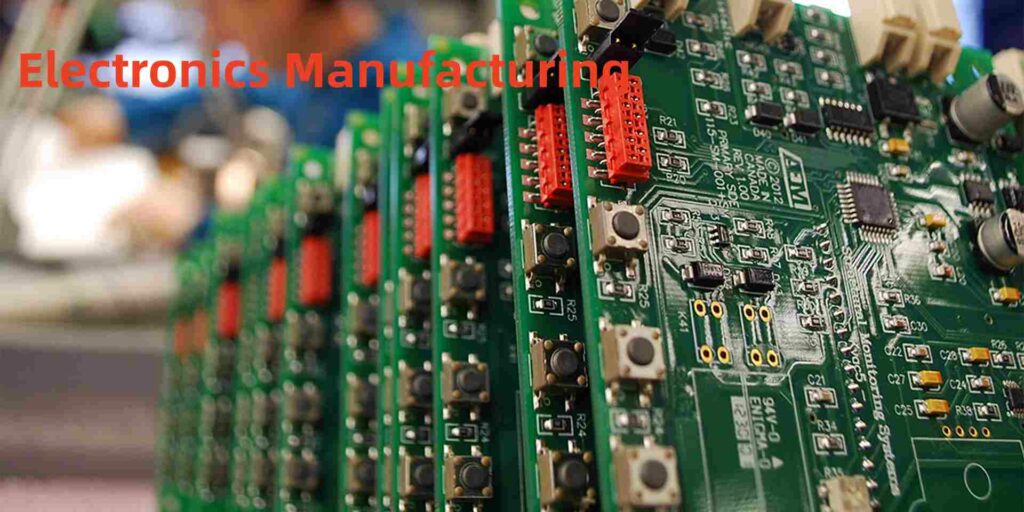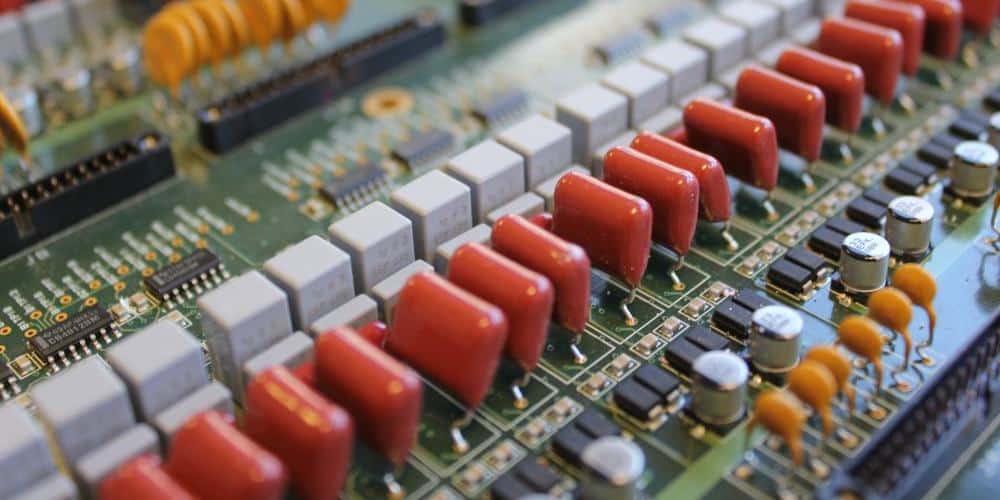Electronic manufacturing services (EMS) provide outsourced manufacturing, assembly, and technical services that allow companies to optimize and scale production of electronic goods designed in-house. Selecting an EMS partner is an important decision that impacts quality, costs, speed-to-market, intellectual property, and customer experience.
This guide covers key factors technology companies should evaluate when choosing an electronics manufacturing services provider to deliver consistent, high-quality output:
Define Manufacturing Requirements
Begin by detailing manufacturing requirements including:
- Product specifications – Size, technology, materials, performance requirements
- Volume – Units per month/year now and in future projections
- Timelines – Production ramp schedules and flexibility needs
- Quality expectations – Defect rates, process capabilities, acceptable quality level
- Budget – Target unit costs given features and volumes
- Compliance – Certification needs like ISO, safety, enviromental
- Customization – Level of configuration/customization required
- Post-manufacturing support – Logistics, repairs, technical support
Thoroughly defining needs allows properly matching services and capabilities.
Core Competencies and Capabilities

Evaluate EMS provider competencies fit for your product:
- Technologies manufactured – SMT, through-hole, box build, etc.
- Materials capabilities – Metal fabrication, plastics, PCBs, cabling
- Quality track record – Industry experience, defects per million history
- Volume capacities – Meet current and scale up as needed
- Change management – Engineering change order process agility
- Continuous improvement – Lean initiatives in place for efficiency
Seek evidence like case studies demonstrating suitable expertise.
Ideal Customer Profile
The EMS customer profile should ideally match yours:
- Market segments served – Industrial, medical, automotive, aerospace, consumer products, etc.
- Company sizes – Startups, small-medium business, large enterprises
- Product complexities – Commodity vs highly engineered products
- Volatility management – Comfort with uncertain demand fluctuations
- Quality culture – Perfectionist vs more pragmatic acceptable defect rates
- Working styles – Collaborative engagement vs transactional
Shared targets and perspectives ease partnerships.
Technology Roadmap Alignment
Evaluate forward-looking technology synergies:
- Engineering depth – Capabilities in materials, software, processes, testing
- Emerging methods – Additive manufacturing, automation, IoT integration
- R&D priorities – Materials science, power electronics, miniaturization, etc.
- Quality initiatives – Data analytics, machine learning, predictive maintenance
- Sustainability – Carbon footprint, waste reduction, water conservation
Shared strategic vision allows co-innovating and co-evolving.
Global Supply Chain Capability
Assess globalized sourcing expertise:
- Footprint – Production locations relative to demand
- Logistics infrastructure – Fulfillment centers, freight partnerships
- Scalability – Ability to expand capacity with demand
- Sourcing networks – Component, raw materials, equipment access
- Customs capabilities – Optimized global import/export processes
- Resiliency – Backup locations, suppliers, materials, logistics
Robust worldwide supply networks enable stability.
Program Management and Collaboration
Evaluate process integration capabilities:
- Account management – Dedicated cross-functional teams
- Project planning – Scheduling, reviews, milestones, communication
- Collaboration tools – PLM/ERP integration, data transparency
- Change management – Efficient engineering change workflows
- Continuous improvement – Kaizen events, lean methodologies
- Risk mitigation – Business continuity, force majeure plans
Seamless collaboration maximizes productivity.
Vertical Integration Options

Determine needs for vertical integration:
- PCB fabrication – In-house board production capabilities
- Mechanical parts fabrication – Casting, stamping, precision machining
- Tooling and fixturing – For injection molding, assembly, etc.
- Testing solutions – Environmental stress screening, product validation
- Post-production services – Logistics, repair, refurbishing
- Customization – Configure-to-order, custom branding, unique features
Weigh costs vs benefits of integrated vs outsourced secondary processes.
Like RayMing Technology
Location: Suzhou, China Established: 2005
Capabilities: PCB manufacturing and electronic assembly. Large volume capacity and quick-turn prototypes.
Industries Served: Automotive, industrial equipment, medical devices
Certifications: ISO 9001, ISO 14001, IATF 16949
Volume Capacity: Over 2 million boards/month
Visiting Facilities
If possible, tour candidate EMS facilities to assess:
- Overall professionalism, organization, cleanliness
- Process capabilities and capacity levels
- Equipment maintenance and calibration
- Testing, inspection, and quality control rigor
- Workforce expertise and technical skills
- Management knowledge and engagement
- Continuous improvement culture
- Lean manufacturing and automation maturity
Direct site visits provide invaluable insights.
Requesting Proposals
Issue detailed requests for proposals (RFPs) to quantify options across:
- Manufacturing plan – Equipment, facilities, staffing
- Project timeline – Major milestones and deliverables
- Quality program – Metrics, testing, management systems
- Service levels – Support structure, account management, change control
- Pricing – Set-up, unit costs, MOQ, volume tiers, tooling amortization
- Contracts – Legal terms and conditions, IP protection
Compare proposal responses meticulously line-by-line.
References and Reputation
Vet shortlist candidates thoroughly:
- Request 5+ client references within your industry
- Verify quality certifications and operating permits
- Review ratings on manufacturing marketplace platforms
- Search for negative press, violations, lawsuits
- Assess company growth and financial health
- Benchmark employee satisfaction through surveys or glassdoor
Favor transparent, reputable providers.
Start Small, Scale Slowly

Initiate engagements gradually:
- Test production interactions through small pilot runs first
- Review workmanship quality thoroughly after pilots
- Scale volumes slowly in modest increments
- Expand services deliberately over phases
- Ramp additional locations/lines based on proven performance
- Maintain respectful candor in project feedback
Cultivate partnerships before full commitment.
Conclusion
Choosing manufacturing partners requires rigorous diligence across operational, technical, financial, and cultural fit. Taking the time to thoroughly evaluate electronic manufacturing services supplier aligns production capacity with long term growth. Strategic EMS relationships become invaluable extensions that allow technology businesses to deliver consistent, high-quality products at global scales.
FQA
What core capabilities should top tier EMS companies demonstrate?
Leading EMS providers exhibit strengths across manufacturing technologies, quality systems, continuous improvement, volume scalability, supply chain agility, and collaborative program management.
What market segments utilize EMS providers most extensively?
Consumer electronics, telecommunications, automotive, medical, aerospace, and industrial companies lead users of outsourced manufacturing services to efficiently scale production.
What are the major distinctions between OEMs and EMS companies?
OEMs design and market end branded products while EMS providers manufacture products designed by clients who own the product IP. OEMs may utilize EMS for production.
What recent trends are shaping the electronics manufacturing services industry?
Growing trends include demand for increased automation, sustainable manufacturing, additive manufacturing, logistics resilience, data-driven services, and highly flexible capacity.
What risks should be evaluated when outsourcing manufacturing?
Key outsourcing risks to assess include quality consistency, trade secret protection, continuity through business disruptions, financial stability, and potential communications or collaboration gaps.





